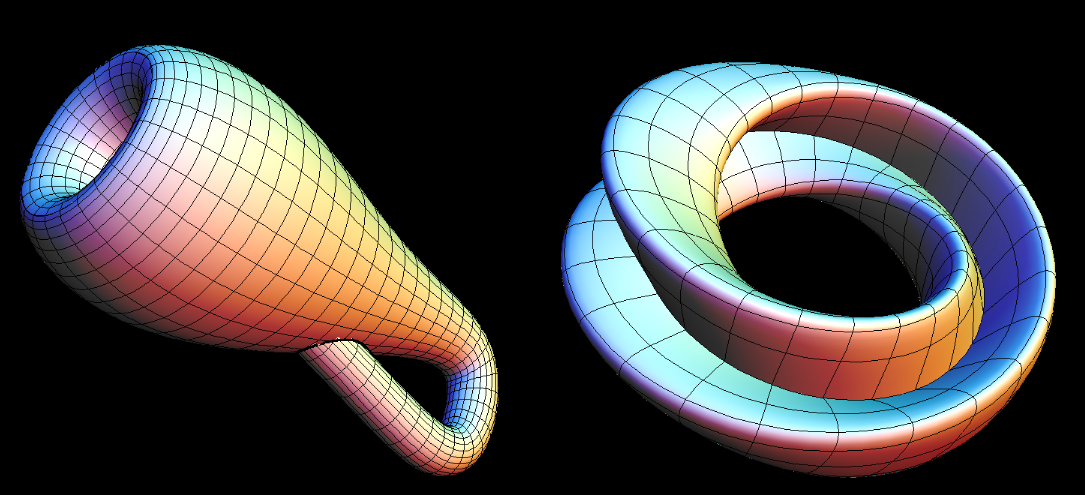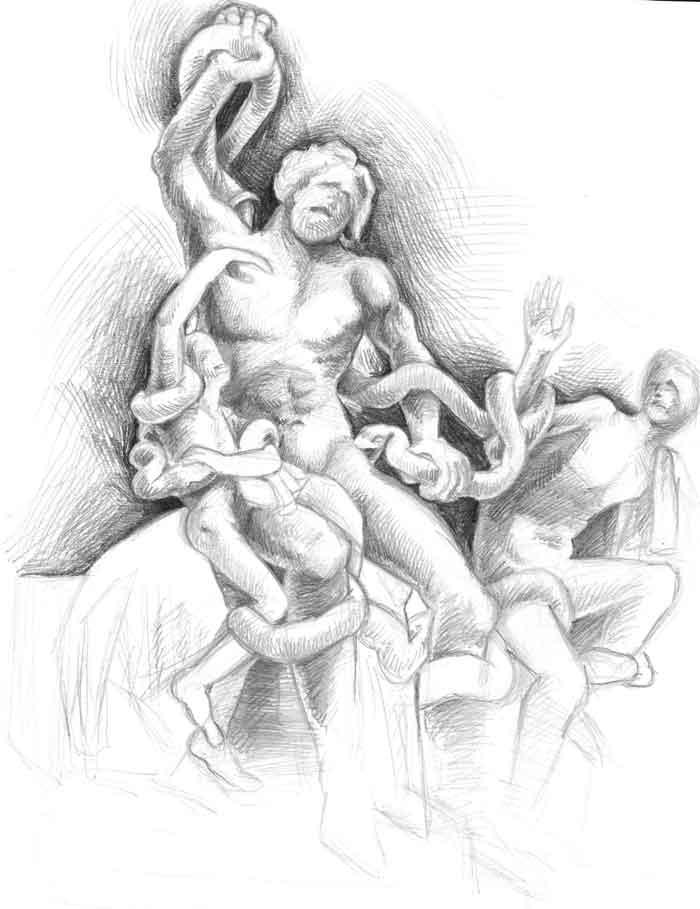The “Hard Problem of Consciousness” is a stop-gap term for a deeper, more precise, and more solvable problem buried underneath; a problem that a physicist would recognize as the Kinematical Problem of Consciousness.
Look-ahead
Can we state the Hard Problem in the language of physics?
This short article will characterize the explicit kinematical tension at the heart of the Hard Problem: there are 2 specific qualities we implicitly ascribe to instantiations of consciousness which are incompatible with our commonly accepted model of the universe; these properties may be called ‘classical indescribability’ & ‘non-emergent integration’.
Having reframed the Hard Problem as an explicit & precise problem of kinematics (physics), we’ll briefly motivate the examinations carried out in ‘On the Psycho-Physical Parallelism’ (2018) - which traces an experimentally testable and (arguably) theoretically satisfying resolution to the problem of consciousness - by describing a novel physical model satisfying the aforementioned kinematical constraints while maintaining compatibility with known physics.
It turns out, kinematics is all you need.
Author’s note: most interesting consciousness work is done from the perspective of physics-inclined philosophers. I am approaching the problem from the perspective of a philosophically-inclined physicist.
My background is in physics (physics BA & MSc @UPenn) — but more importantly, my criteria and problem statements are explicitly physical & causal.
Why do we regard the Hard Problem as hard?
What specifically is so hard about the Hard problem? What specifically motivates the widespread intuition that consciousness is mysterious in a way that gravity, or electromagnetism are not? (or in a way that bacteria, GPT-4, and the planet Jupiter are not?)
In other words, what specific properties would a model have to possess for the infamous “explanatory gap” to be filled-in?
Hard, but simple
The Hard Problem is fundamentally simple: there’s an object we perceive to exist in our universe (call it consciousness, or subjective experience, or a qualia cluster, or whatever you please) - and yet we find no room for this object in the universe as we know it; not in our physics textbooks, nor our CS textbooks, nor our neuroscience textbooks, etc.
But why specifically do we find no room for this object? The universe as we know it admits tremendously rich structure and all sorts of strange & fantastical objects (from atomic nuclei, to chess engines, to black holes). What is it specifically about consciousness that seems irreconcilable with all of this richness? Why specifically do we examine consciousness, and conclude that even in principle, it isn’t captured by our current theoretical model of the brain?
Clearly, there is some reason for this widespread belief. Can we explicitly articulate it?
As Chalmers pointed out with his Easy Problem / Hard Problem dichotomy, the problem is NOT with the high-level (intelligent) behavior we associate with conscious cognition. Nothing about human or animal behavior seems to be fundamentally at odds with the universe as we know it.
Instead, the problem is with the constitution of the ‘consciousness’ object - with what it is made of. There are certain qualities we implicitly attribute to any ‘instance of consciousness’ - which we find incompatible with the objects that can be instantiated in the universe as we know it. But what specifically(!) are these qualities?
Kinematics and Dynamics
It is often useful in physics to decompose a problem to its kinematical and dynamical elements.
Like much of physics terminology, these terms first came into use in the context of Newtonian mechanics & mechanical motion. They have since morphed to accommodate broader meanings which remain central under modern physics.
Roughly speaking, the kinematics of a theory is centered on “the kinds of objects that can exist under the theory”; or the state-space admitted by the theory.
The dynamics of a theory is centered on “the detailed time evolution of objects described by the theory”; or the regularities that relate the allowable states to one another.
4-dimensional clumps of mud
Let’s make this concrete with an example.
Suppose I asked you to hand me a 4-dimensional coffee cup, or perhaps just a 4-dimensional clump of mud, in whatever shape you please (I was going to say a Klein Bottle, but you really don’t need to reach that far).
Obviously, you can’t. Not because it’s very complicated to build a 4-dimensional clump of mud. But because as far as we can tell, you simply can’t build 4 dimensional objects in our universe. This is a property of our physical theory’s kinematics: 4-dimensional arrangements of atoms are not one of the structures that can be instantiated under this theory.

If, on the other hand, I asked you to draw the trajectory of SpaceX’s Starman over the next 1 year, it would be complicated, but doable. To draw this trajectory, you’d need to work out, in detail, all the forces acting on Starman per Newton’s laws, and integrate their effects on its current motion. In doing so your attention will be turned to the physical theory’s dynamics.
So to reiterate, in short: kinematics = what can exist, dynamics = how objects evolve.
The Kinematical Problem of Consciousness
The Hard Problem is in a sense analogous to the problem of constructing a 4-dimensional coffee cup. Given the known building-blocks of physics, it seems no more possible to construct instances of (phenomenal) “consciousness” than 4-dimensional coffee cups.
It is telling that we generally come to this conclusion without first gaining a deep understanding of the kinds of objects allowable by modern physics. Why specifically do we expect consciousness to be incompatible with known physics - even without first deeply familiarizing ourselves with known physics? What kind of strange quality could possibly render the ‘consciousness instance’ unintelligible to such an extent?
Classical indescribability
The quintessential statement of the Hard Problem, (which in a sense goes at least as far back to Leibniz’ Mill), goes something like this:
Suppose we had a complete theory of nature that purported to fully capture consciousness under some appropriate mathematical formalism. Suppose then that under this theory some object X = (x1, x2, x3, …) represented ‘the conscious experience of seeing the color green’, and some object Y = (y1, y2, y3, …) represented ‘the conscious experience of tasting chocolate’. Even if all of the predictions of the theory were validated, there would still remain a mystery: why does an instantiation of object X in the universe “feel like this”, and an instantiation of object Y in the universe “feel like that”? (“explanatory gap”).
Implicit in this question is a hidden assumption; for there to be a “gap” there must be some concrete attribute to ‘real’ qualia which manifest in the universe (‘the taste of chocolate’, ‘the color green’) which would NOT be captured by objects X and Y under the formalism.
Such attributes point to the property of consciousness which may be called ‘classical indescribability’.
We can’t imagine how ‘the qualia of the taste of chocolate’, or ‘the qualia of the color green’ could possibility be the solution to a physics equation — simply because we cannot imagine writing down any expression that would capture everything there is to capture about these pieces of reality in the first place. If you can’t as much as describe an object, how could you possibly describe the intricate regularities that relate it to all other objects in existence? (i.e. its physics).

We don’t mean this in some sort of vague philosophical sense. When you look out the window, an object you might call a ‘qualia cluster’ (or a ‘consciousness instance’, or a ‘subjective experience’, ...) is instantiated in the universe. On a sunny day, this object might contain within it ‘the qualia of the color blue‘ (sky), as well as ‘the qualia of the color green’ (grass). As far as you can tell, these 2 qualia are very concrete ‘pieces of reality’, that simply exist! And yet certain aspects of these pieces of reality do not seem at all amenable to any kind of classical description. It is not expressible in the language of bits.
Obviously it isn’t the case that everything about the pieces of reality we call qualia is ‘indescribable’ - or we would each live in total isolation (in particular, all relations between qualia seem perfectly amenable to mathematical description; but we are getting ahead of ourselves.) And yet, some aspect of each quale appears to be completely opaque to description (if you disagree, describe ‘green qualia’ to a blind man; I’m sure he would appreciate it!).
This ‘classical indescribability’ is precisely the attribute of qualia which philosophers gesture towards when they say things such as ‘qualia are the ‘intrinsic nature’ of reality’; in this context, ‘intrinsic’ is code for: cannot be written down in a physics textbook. It is also the aspect of consciousness gestured at by the philosophical “new knowledge” argument of black & white Mary (because how could Marry use textbooks to learn of an object not representable via writing?).
This explains why we don’t think to study physics textbooks before accepting the Hardness of the Hard Problem: we imagine that it’s impossible to describe a physics over (partially) classically indescribable objects, in a textbook written with words and equations on paper. What will we put in our equations if the objects the theory operates over cannot be described? In the interest of brevity, in this article I will only say that perhaps we imagine wrongly.
A formal starting point: “classically indescribable” == “not isomorphic to any sequence of classical bits”.
Non-Emergent Integration
There is yet another property we implicitly ascribe to ‘consciousness’ / ‘subjective experience’ / ‘qualia clusters’ which is likewise in kinematical tension with the universe as we know it: non-emergent integration.
This property is what philosophers have come to refer to with the binding problem, or the combination problem, or the boundary problem.
Unlike classical indescribability, non-emergent integration does not intuitively feel “unimaginably” difficult to accommodate within “any possible” theory of physics - it simply isn’t accommodated by standard accounts of e.g. the brain (and to a large extent, of physics).
In a word (or a paragraph), the problem is this: each “instance of consciousness” (or “qualia cluster”, or “subjective experience”, …) contains within it many qualia which unambiguously constitute a single complex whole. In classical physics, a single complex whole is always “in the eye of the beholder” - defined by nothing more than simplifying a high-level analysis of a system’s time evolution (by giving rise to emergent higher-level regularities). For instance you might regard an enormous collection of atoms as “a chair”, because their collective behavior approximates the behavior of a single (imaginary) first-class “chair” object to a high degree of accuracy; and analyzing the behavior of a “chair” is FAR simpler than analyzing the true behavior of these atoms individually.
The problem is that the qualia making up a single “consciousness instance” appear to be related to one another by something other than “convenience” of analytical simplification.
When we designate the collection of qualia in our ‘current’ consciousness as a single cluster, what we don’t do is look at a large ‘ocean of qualia’, and say, “you know what, treating this group of qualia over there as a single cluster really simplifies an analysis of the system’s behavior”. (Whether you realize it or not, that is exactly what you do when you designate a baseball, or a computer, a person, or indeed your own body- as a single unified entity). To briefly illustrate this point, one plausible way to point to ‘your current consciousness instance’, is as ‘the collection of all the qualia you currently know to exist’.
If you are already familiar with the binding problem, I hope you can appreciate that it is yet another source of specifically kinematical tension; how can we describe a single complex whole (with parts related by something other than emergent analytic simplification) if our physics does not give us the language to do so? In the interest of focus & brevity, in this article I will leave it at that.
On first examination these 2 kinematical tension points (binding / classical indescribability) appear to be completely unrelated. But on deeper examination they turn out to be intricately connected.
What’s next?
I claim that if our physics explicitly described “instances of consciousness” — including all of the baggage we just alluded to (and some that we did not): classical indescribability, binding; the works — then the Kinematical Problem of consciousness would disappear.
The physics-oriented formulation of the problem of consciousness then goes as follows:
How should instances of “consciousness” be theoretically represented (kinematical part), and what are the minimal regularities that relate “instances of consciousness” to all other structures thought to exist (dynamical part).
Once you make this problem explicit, it turns out you have very few opportunities for choice; a path towards an experimentally testable solution presents itself.
In previous works, I’ve described & argued for a theory of physics which:
- Makes (highly detailed) novel experimental predictions.
- Reproduces the experimentally-verified predictions of modern physics.
- Resolves deep physics puzzles considered unrelated to consciousness.
- Resolves the problem of consciousness - by introducing into theoretical physics an object we would explicitly recognize as describing a ‘consciousness instance’; and describing the regularities that relate it to all other objects described by physics.
I hope to continue this series of focused / bound explorations of these previous works. In the meantime, you are welcome to read ahead in ’Untangling Consciousness’ (popular-ish exposition) or in ‘On the Psycho-Physical Parallelism’ (academic paper).
At a high level, the remaining works trace 3 parts:
- It turns out that with the aid of a few trivial & unremarkable observations, we can derive enormously powerful causality-consistency constraints on the “kinds of theories” which could conceivably resolve the physics-oriented problem of consciousness as given above; the vast majority of theory-space can be immediately ruled out as incompatible without having to delve into any specifics. In particular, both IIT-style theories, and the (“naive”) Russelian monist panpsychist account favored by many philosophers, can be shown to be inconsistent with observation.
- Next, we must make a detailed examination of modern physics, in search of a “region” of known theory-space compatible with the causality constraints derived in (1). It turns out that only a very narrow region of modern physics is suitable. At this stage we can already come up with detailed experimentally testable predictions that are very surprising from a naive contemporary standpoint.
- Lastly, we need to reformulate/extend current theory to explicitly describe objects of the kind we are looking for. And of course, once again confirm the modified theory’s validity via experiment.
Correct or delusional? Experiment will tell.

Join the conversation.